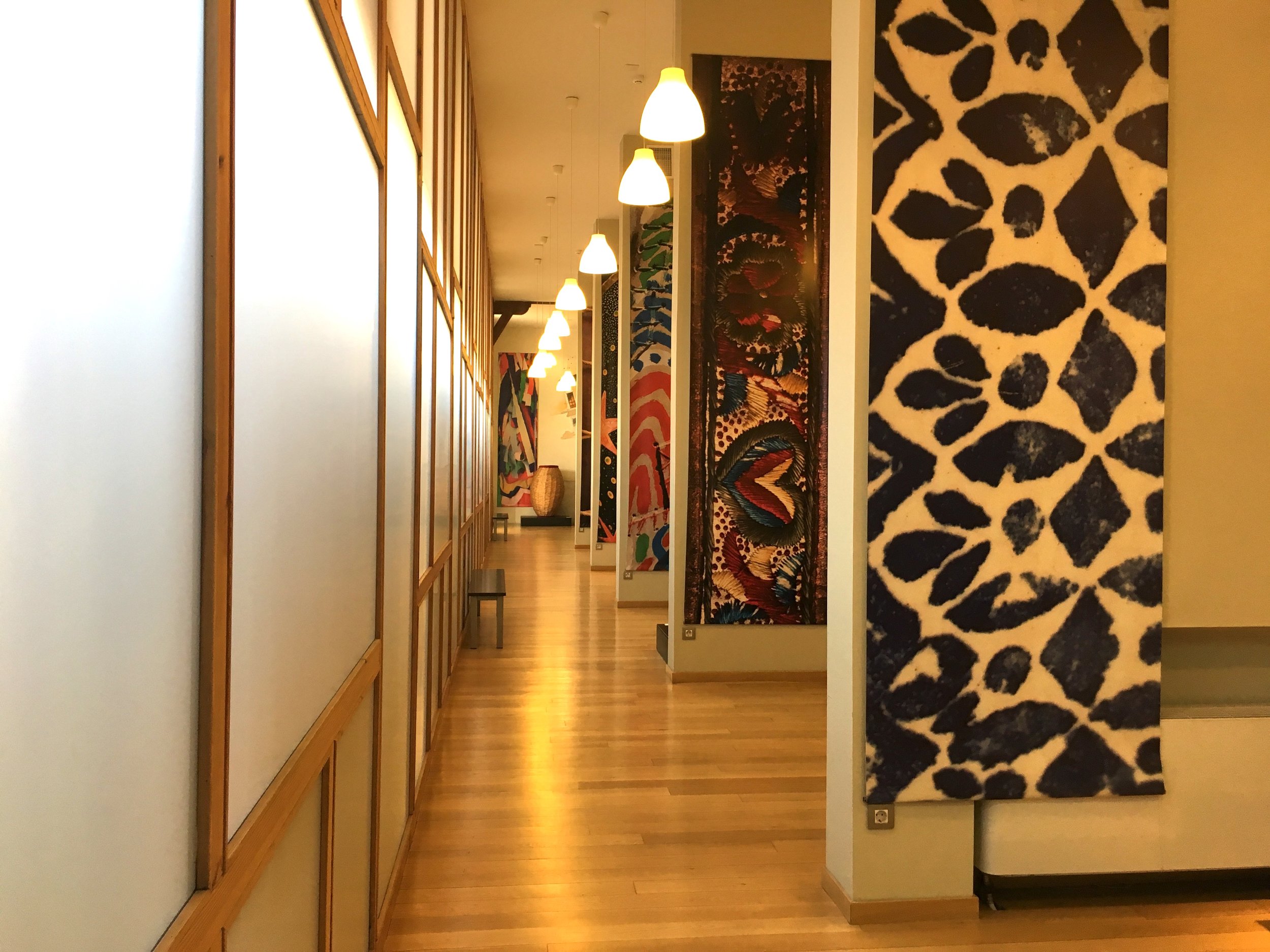Centro Cultura la Corrala
Madrid, Spain. The Museum of Popular Arts and Traditions is in the rennovated "El Corralon" from 1860.
2 floors of exhibits are stacked along a hallway, organized by "stall". The upper floor is a mezzanine.
Translucent panels face the courtyard.
In museums, everything is taken out of context, simply because it's placed in a museum. To me, this feels most poignant with costumes, worn by real people and meant to be part of lively community events and rituals, displayed on stiff mannequins. This universal museum dilemma seems most dramatic in ethnographic museums. Are they preserving the memory of a culture, and at the same time confirming that it's "all over" because it's in a museum?
The answer is always in the programming, but that's not always evident to visitors. How does a museum connect to current cultures, that may be enriched by looking back at their own history?
Rattan mats on the stairway, and a mirror underneath.
These plex panels have that "added" look, probably for safety reasons, after the Artisan areas were installed.
A funny transition between the end of the hall and a barn area, leading to another hallway under install.














